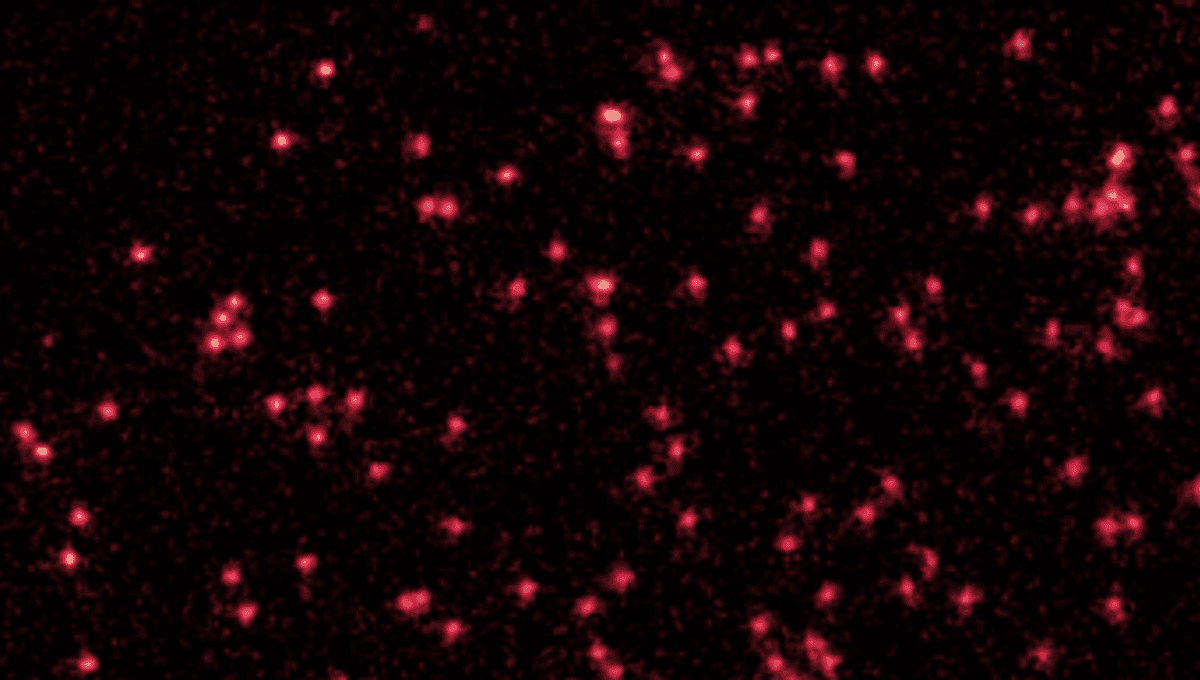
Particles and waves are one and the same in our universe. This challenge to the expected binary is everywhere, but it becomes crucial at the quantum level. The wave-particle duality has been studied for over a century with a myriad of experiments, but researchers have now done something different: They have captured it on camera.
In a first-of-its-kind image, researchers were able to capture the clear moment when individual atoms begin to act like “wave packets”, their results shown in a pre-print paper that has yet to undergo peer review. The equations that govern this have been known since the early days of quantum mechanics, so the team knew exactly how the system would change. The challenge was in the imaging technique.
Speaking to IFLScience, article authors Dr Tarik Yefsah, Joris Verstraten, Dr Tim de Jongh, and Dr Bruno Peaudecerf have compared their imaging techniques to pixels of a regular digital camera. The lithium atoms are first cooled down to near absolute zero using lasers. They are trapped in an optical lattice but given enough time to turn into a localized wave packet.
This could for instance improve our understanding of remarkable states of matter, such as extremely dense neutron stars, or the plasma of elementary particles found shortly after the Big Bang
Verstraten et al.
The optical lattice is turned off so that the atom-wave can expand before being turned on again, pushing the packet back into the particle state. The trapped atom fluoresces and this can be recorded by the microscope system. The method is repeated many times so that the researchers can sample the whole wavefunction density.
“Wave packets are one of the most elemental manifestations of wave-particle duality. Despite this, surprisingly few experiments were dedicated to measuring the expansion of a single-particle wave packet directly and with a good resolution, which is what we do in the article,” the authors have told IFLScience. “Besides, because their behavior is well understood, they make a great test object to benchmark the microscopy technique that we developed: by recovering the expected behavior, we can confirm that the imaging method itself does not introduce any significant bias.”
Picking a setup that is theoretically well understood helped them showcase the robustness of this technique to provide views of quantum behaviors without majorly affecting them. In quantum mechanics, the observer is after all part of the experiment. The next step is using it for states that are less understood.
“Using the imaging technique that we developed and tested in the article, we are planning to look directly at the microscopic properties of strongly interacting fermionic systems. The behavior of those systems is much less understood than the wave packets that we studied in the article,” the authors continued. “This could for instance improve our understanding of remarkable states of matter, such as extremely dense neutron stars, or the plasma of elementary particles found shortly after the Big Bang.”
The paper describing these observations is available on the pre-print server ArXiv.
Source Link: First-Of-Its-Kind Image Shows Single Lithium Atoms Turning Into Quantum Waves